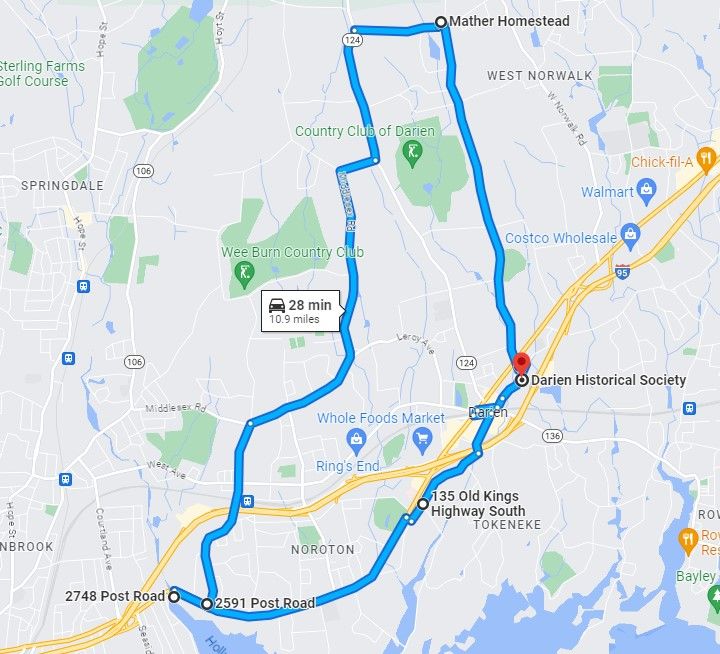
Unveiling Darien’s Historic Tapestry

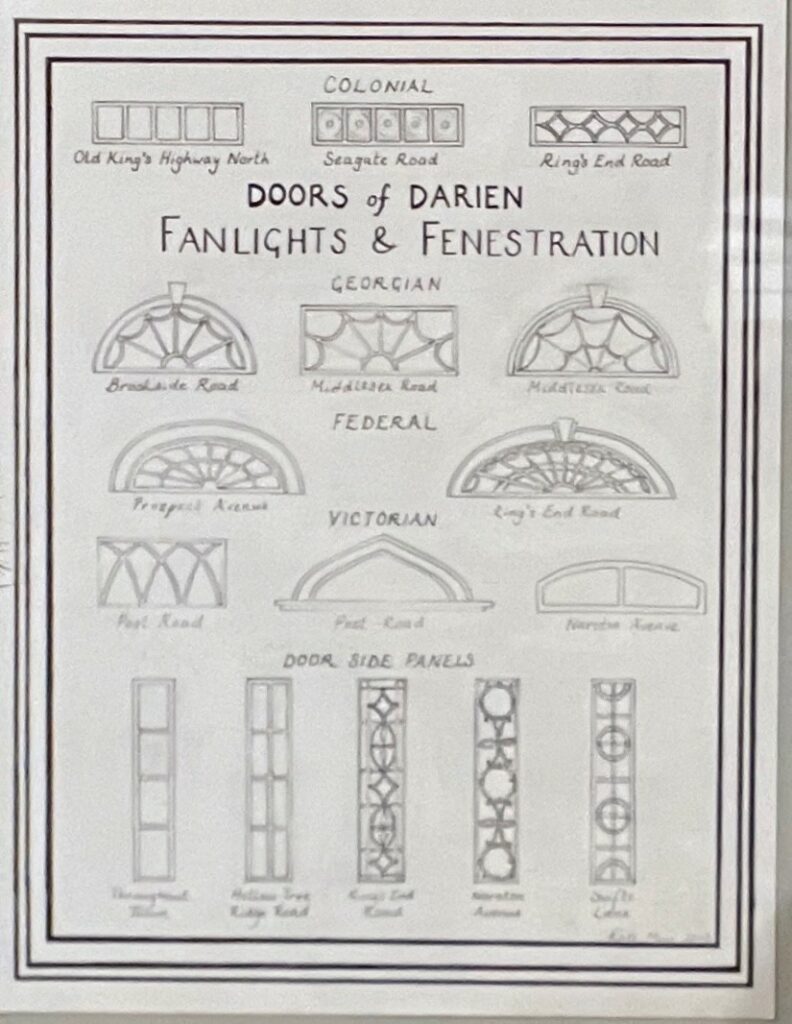
As an architect with a keen eye for history and design, I recently had the delightful opportunity to join a tour organized by the Museum of Darien (by the way, stop by and check out their “Doors of Darien” show, highlighting artist Kate Muir’s work, up until July 14, 2023) , which promised to unveil the hidden treasures and fascinating stories of Darien, Connecticut. Little did I know that this journey would take me through centuries of history, grand architectural wonders, and a dose of local legends. Join me as I recount my adventures and discoveries in this engaging and lighthearted blog post.
Our tour took me to:
- Bates-Scofield House / Museum of Darien
- The First Congregational Church of Darien
- The Mather Homestead
- Pond Weed house
- Darien Cemetery
- George Washington Plaque
See the loop we took HERE ON GOOGLE MAPS.
Stepping into the Bates-Scofield House (1)




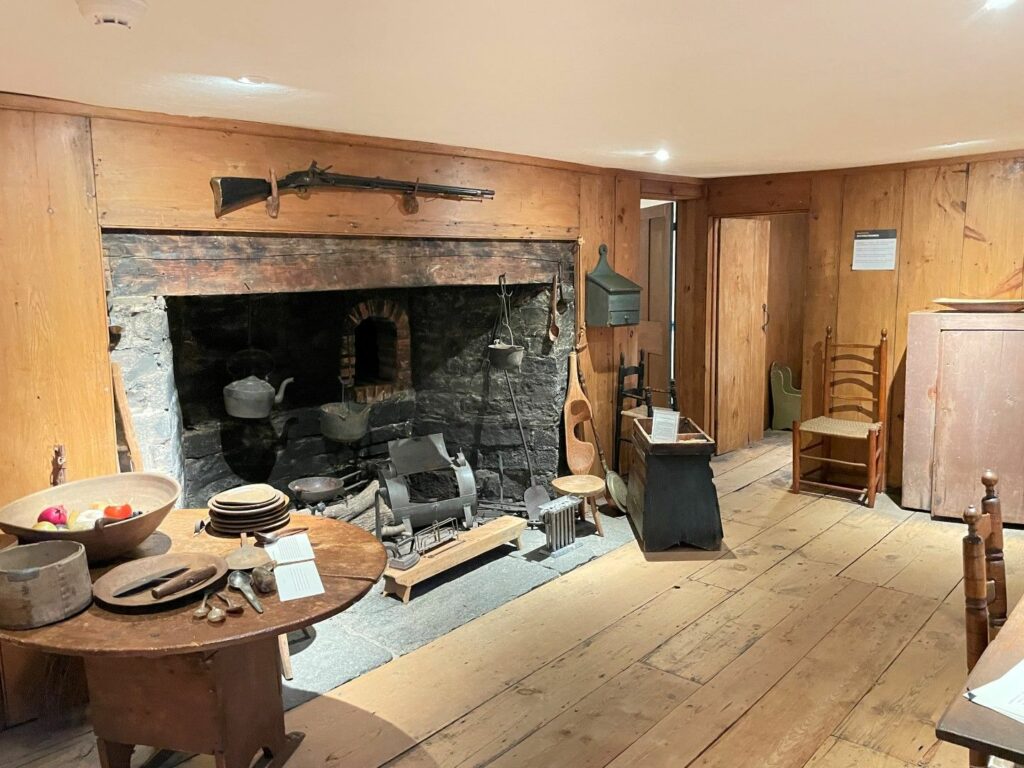
Our first stop on tour, The Bates-Scofield house, holds a rich and fascinating history that reflects the evolution of the town and its residents. Built in the mid-18th century, this colonial-era home served as the residence of prominent families and witnessed the changing tides of American history. Originally constructed by John Bates, an influential merchant and farmer, the house stood as a symbol of prosperity and stability during the revolutionary period. In the early 19th century, the Scofield family acquired the property, and their legacy intertwined with the house for generations to come. Throughout the years, the Bates-Scofield house has withstood the test of time, surviving various architectural modifications and renovations. Today, it stands as a cherished historical landmark, offering visitors a glimpse into the past and serving as a reminder of Darien’s vibrant heritage.
Particular crowd-pleasers were the secret closet, and the small knit sample, by Ms. Scofield herself!
Embracing Serenity at The First Congregational Church (2)
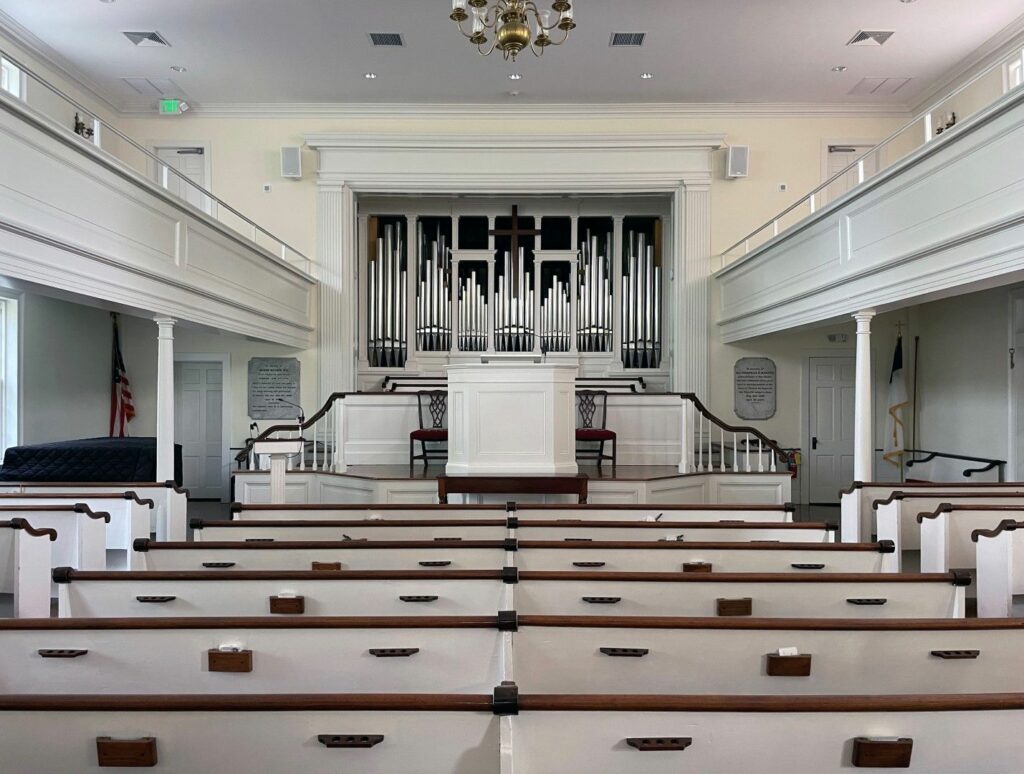
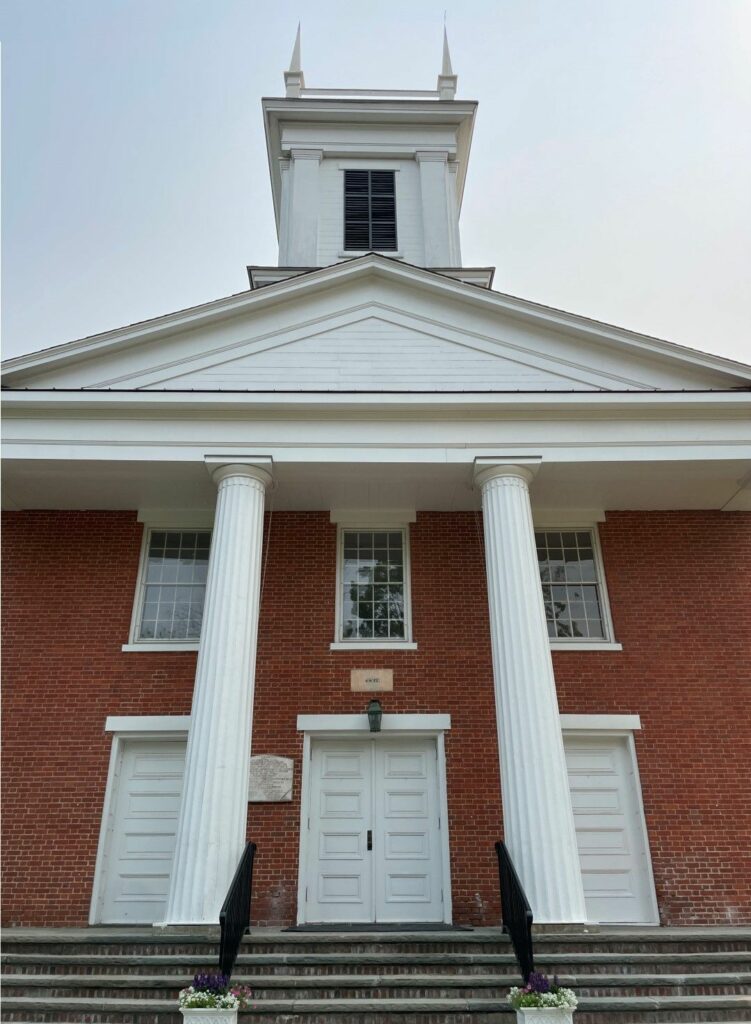
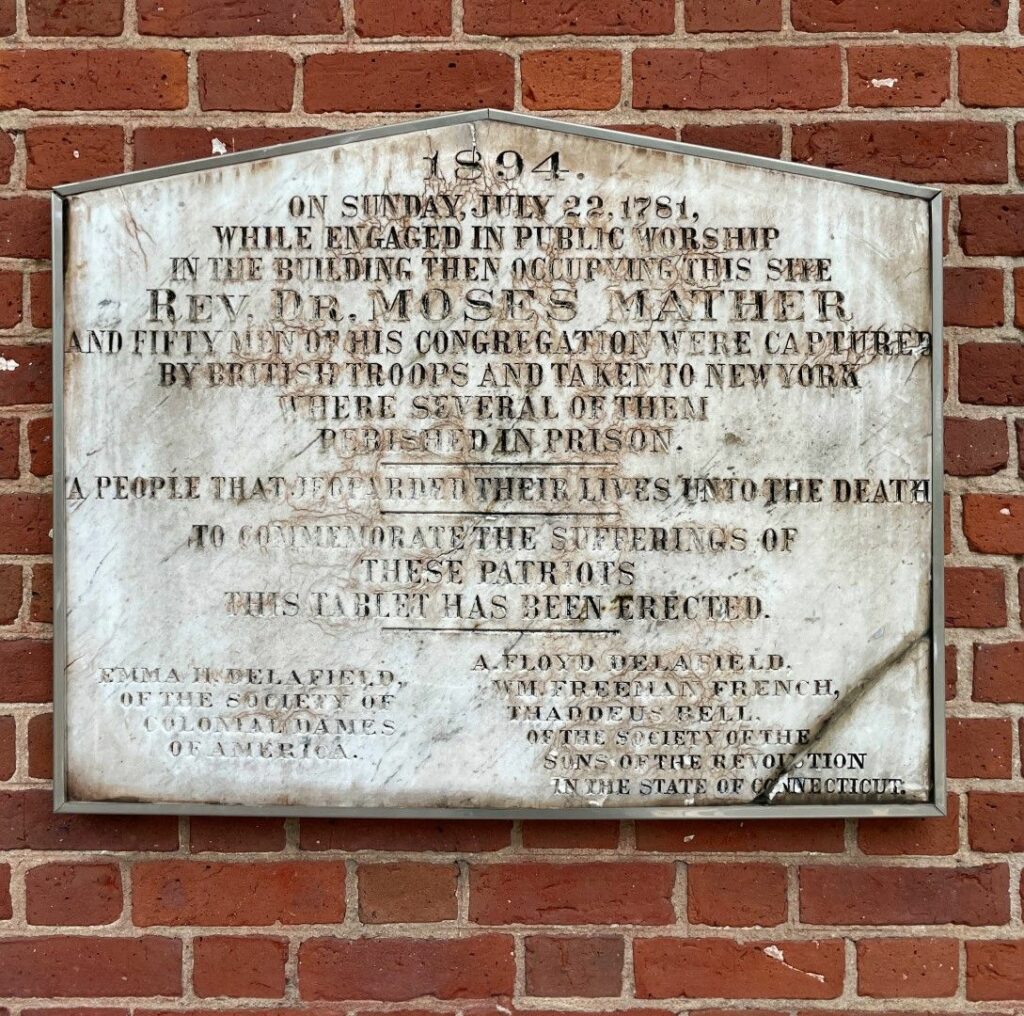

Our tour continued with a visit to The First Congregational Church of Darien, with its a rich history that dates back to its establishment in 1737. One of the prominent figures in the church’s history is Moses Mather, whose story is closely intertwined with its founding. Mather, a dedicated preacher and theologian, arrived in Darien in the mid-18th century, bringing with him a fervent desire to establish a place of worship. Under his leadership, the First Congregational Church flourished, attracting a growing congregation and becoming a vital center of religious and social life in the community. Mather’s sermons were known for their eloquence and powerful messages, drawing people from near and far to hear his teachings. His influence extended beyond the church walls, as he played an instrumental role in shaping the moral and cultural fabric of Darien. Today, the First Congregational Church stands as a testament to the legacy of Moses Mather and continues to serve as a spiritual beacon for the community.
We also learned of when Moses Mathers was captured by the British in the middle of a sermon. After being released and returning to the pulpit many months later, he restarted with “As I was saying before I was interrupted”.
Rediscovering the Mather Homestead (3)

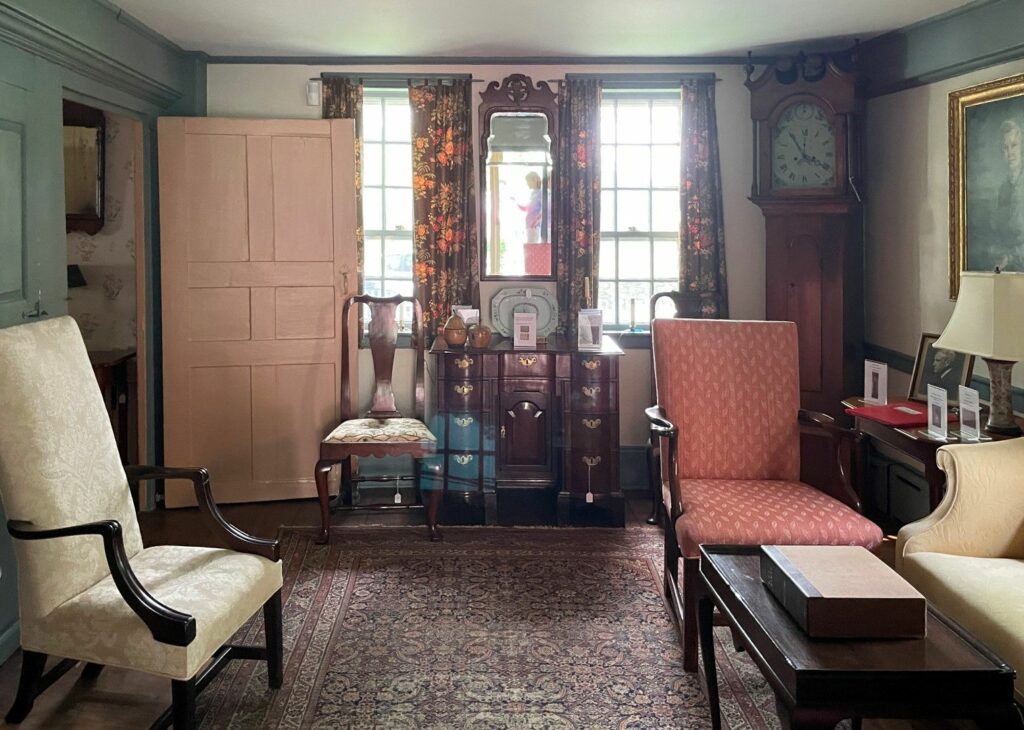
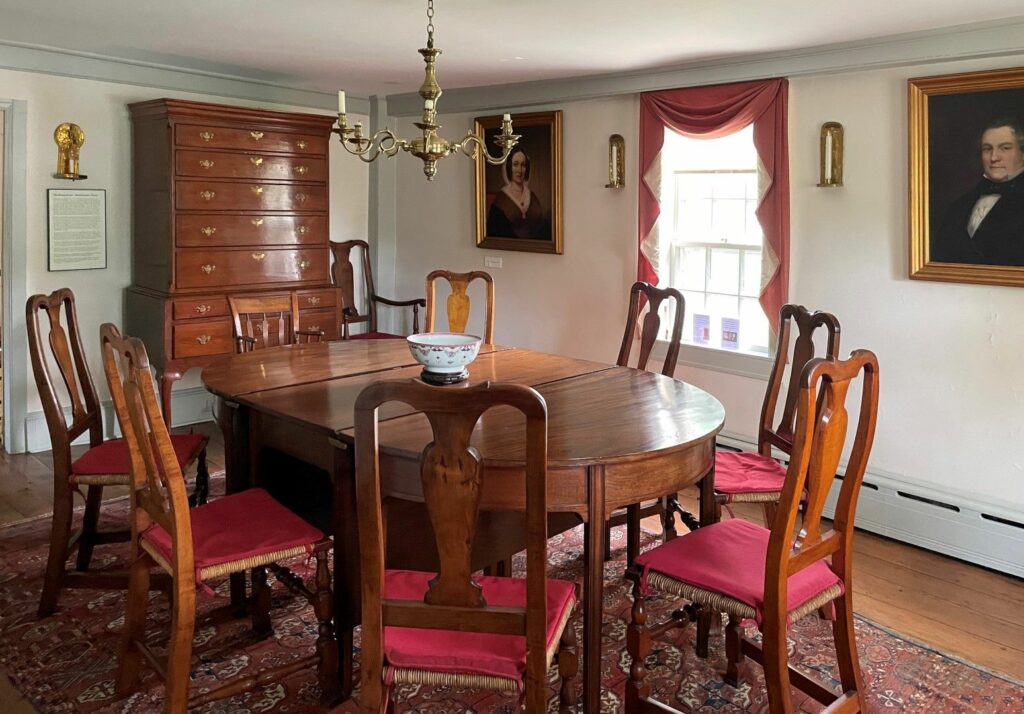
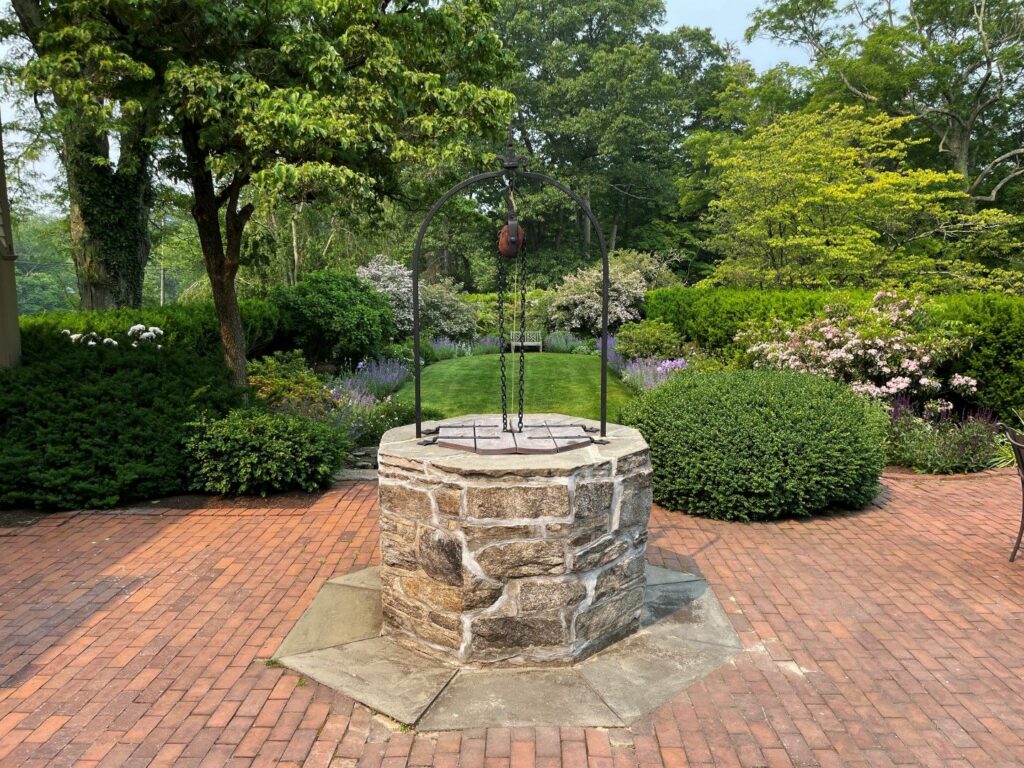

The Mather Homestead proved to be a fascinating blend of history, architecture, and the enchanting stories of its former inhabitants.
The Mather Homestead holds a rich and fascinating history that spans over three centuries. The homestead was originally built in 1778 by Deacon Joseph Mather, a prominent figure in the community during the Revolutionary War era. As one of the oldest surviving homes in Darien, the Mather Homestead has witnessed the town’s evolution from a small farming community to a bustling suburban enclave. The house remained in the Mather family for generations until it was eventually purchased by the Town of Darien in 1941. Today, the Mather Homestead stands as a cherished historical landmark, offering visitors a glimpse into the past through its beautifully preserved architecture and captivating stories of its former inhabitants.
Exploring the beautifully preserved rooms, we gained a deeper understanding of the Mather family’s influence on the local community and their connection to notable figures in American history. It was a delightful reminder that every home has its own unique story to tell. Here again, there were some secret hiding spots, where the Mather’s attempted (but did they succeed?) in hiding their valuables from the raiding Brits!
The Pond Weed House: A Quirky Icon (4)
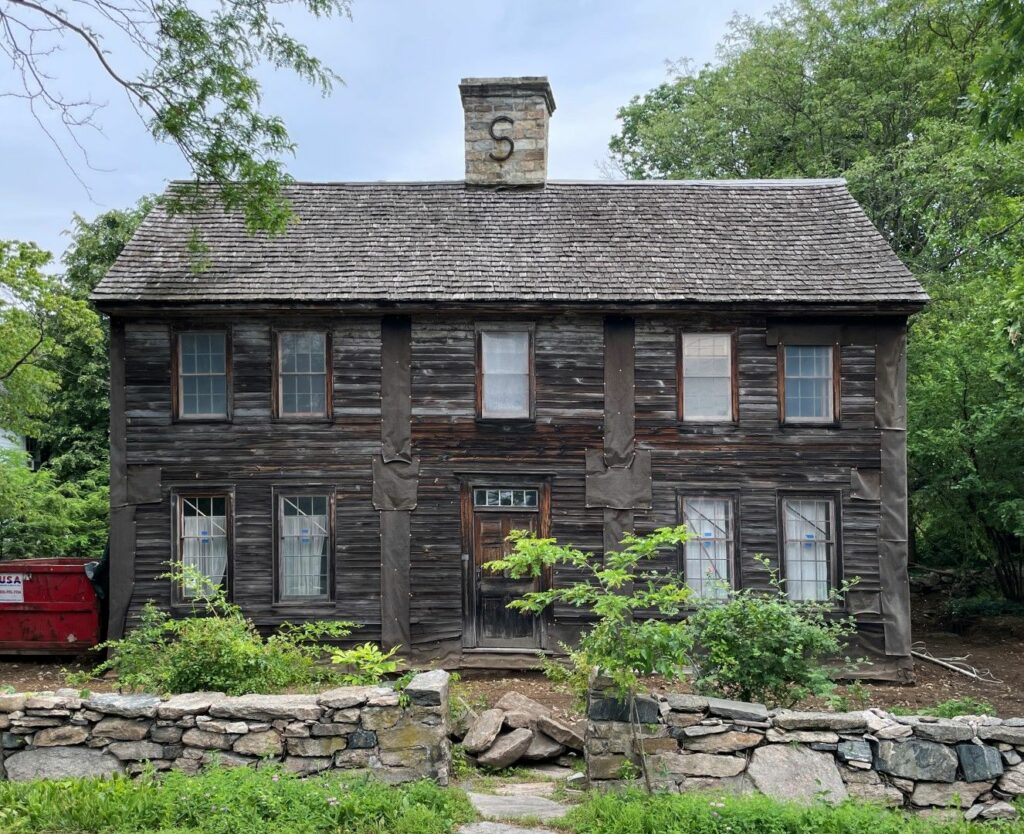
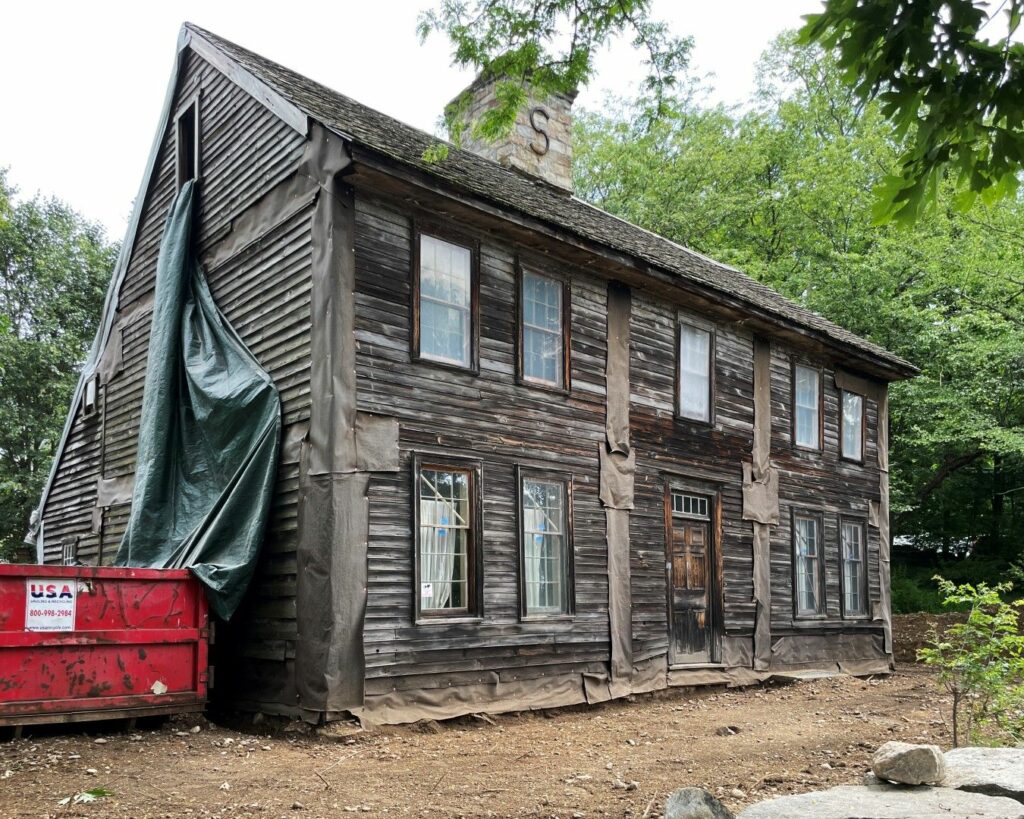
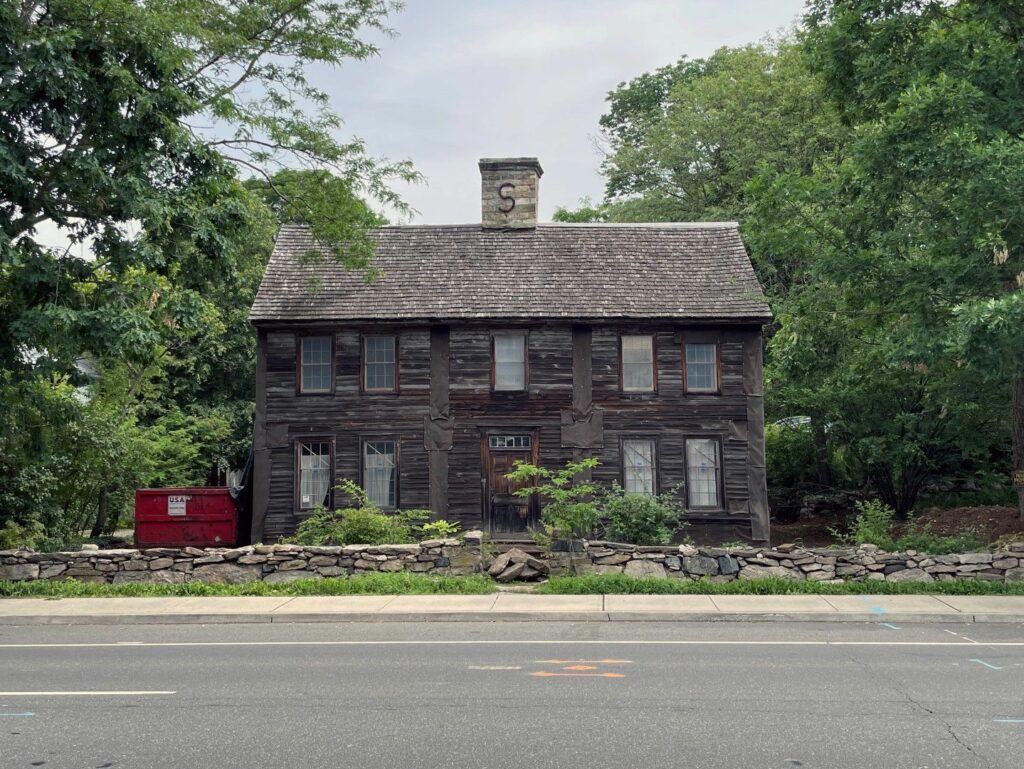
One of the highlights of the tour was the chance to witness the town’s iconic Pond Weed house. Originally built in the mid-1700s, this historic house was named after the Pond family, who were among the early settlers of the region. Over the years, the property changed hands several times and witnessed various architectural transformations, reflecting the evolving tastes and needs of its owners. The house played a significant role in the local community, serving as a meeting place for town gatherings and events. Its picturesque setting by the pond added to its allure, making it a cherished landmark in Darien. Today, the Pond-Weed House stands as a testament to the town’s heritage, preserving its historical charm and offering visitors a glimpse into the rich history of the area.
NOTE! This is a private house, so be respectful and do not enter the property.
Whispering Tales from the Historic Cemetery (5)
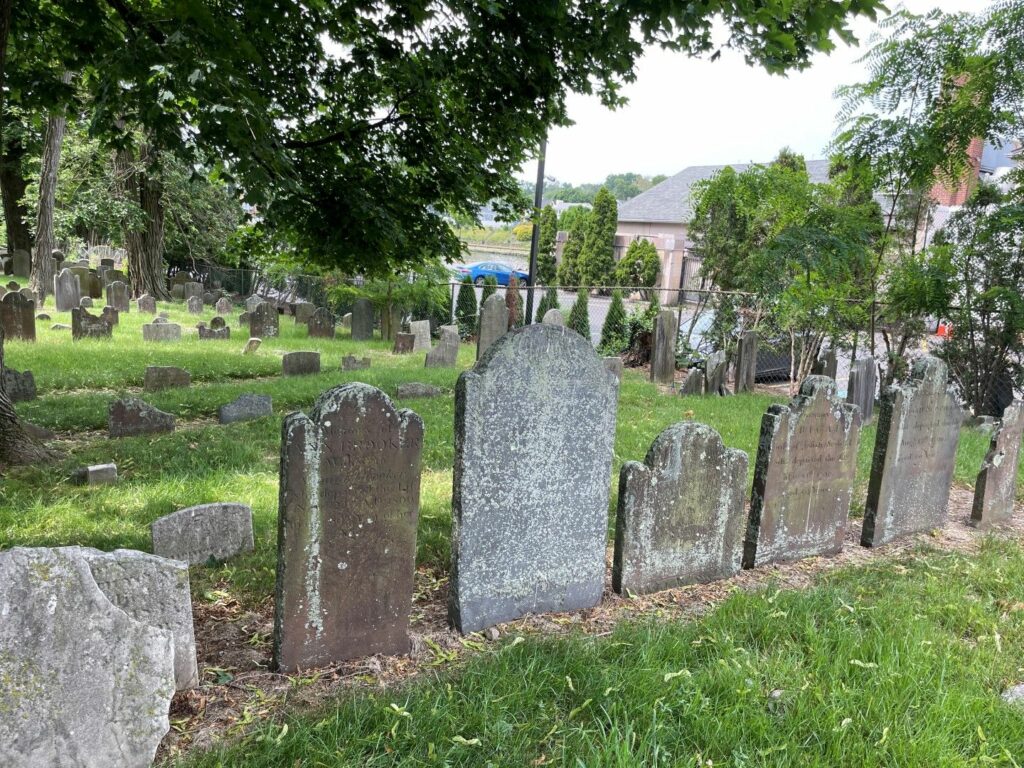
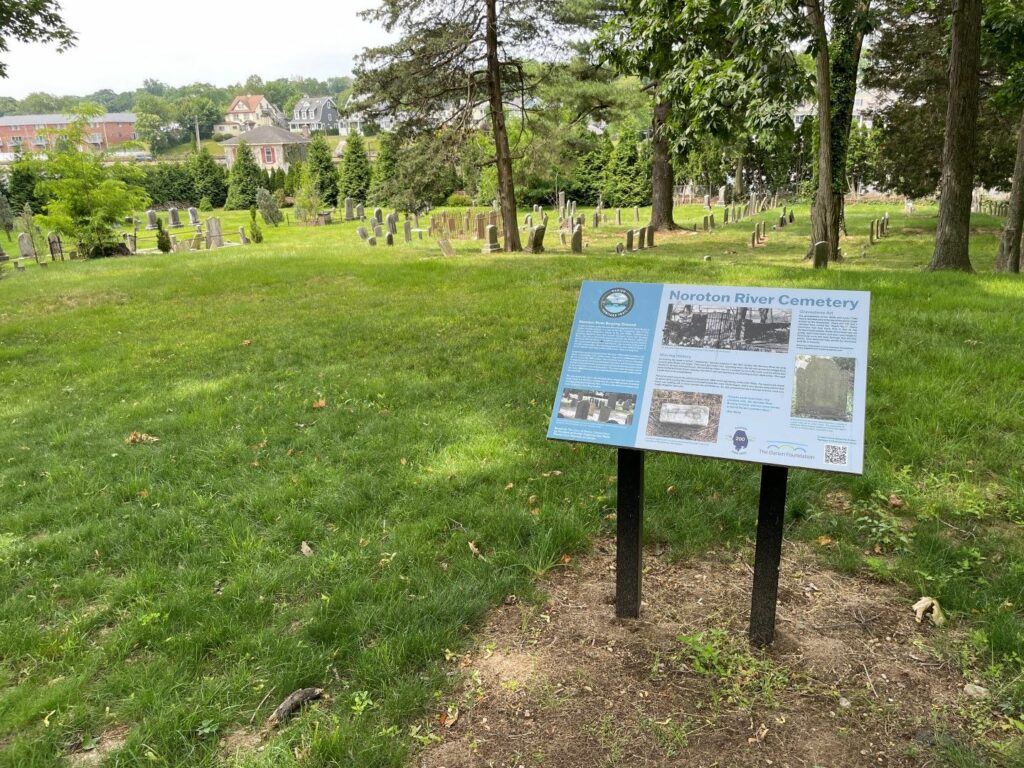
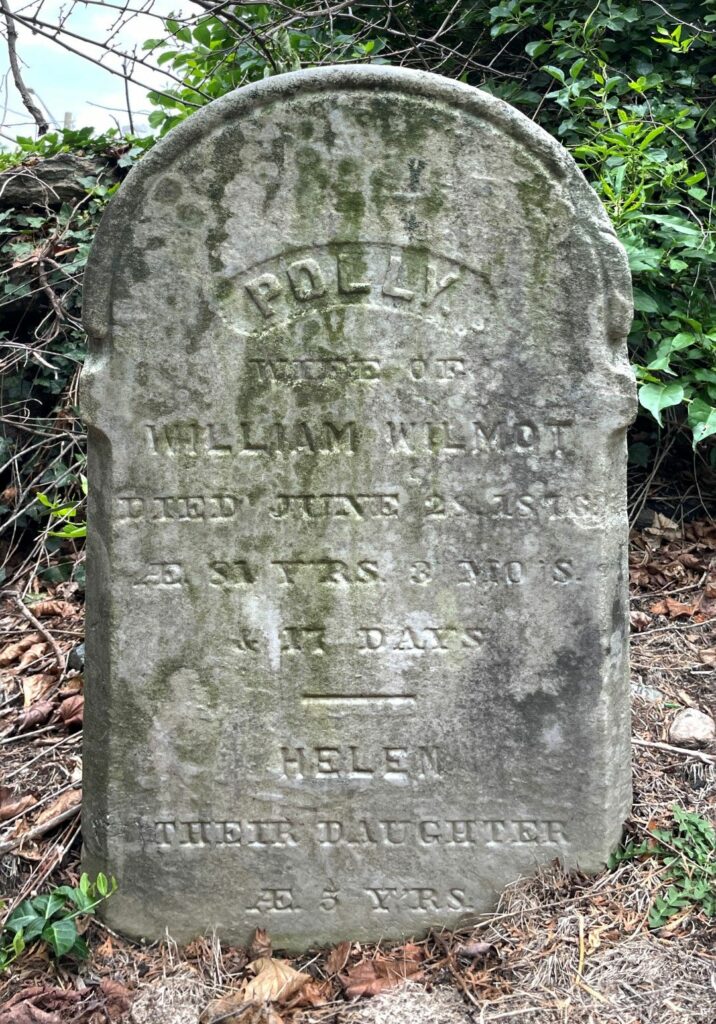
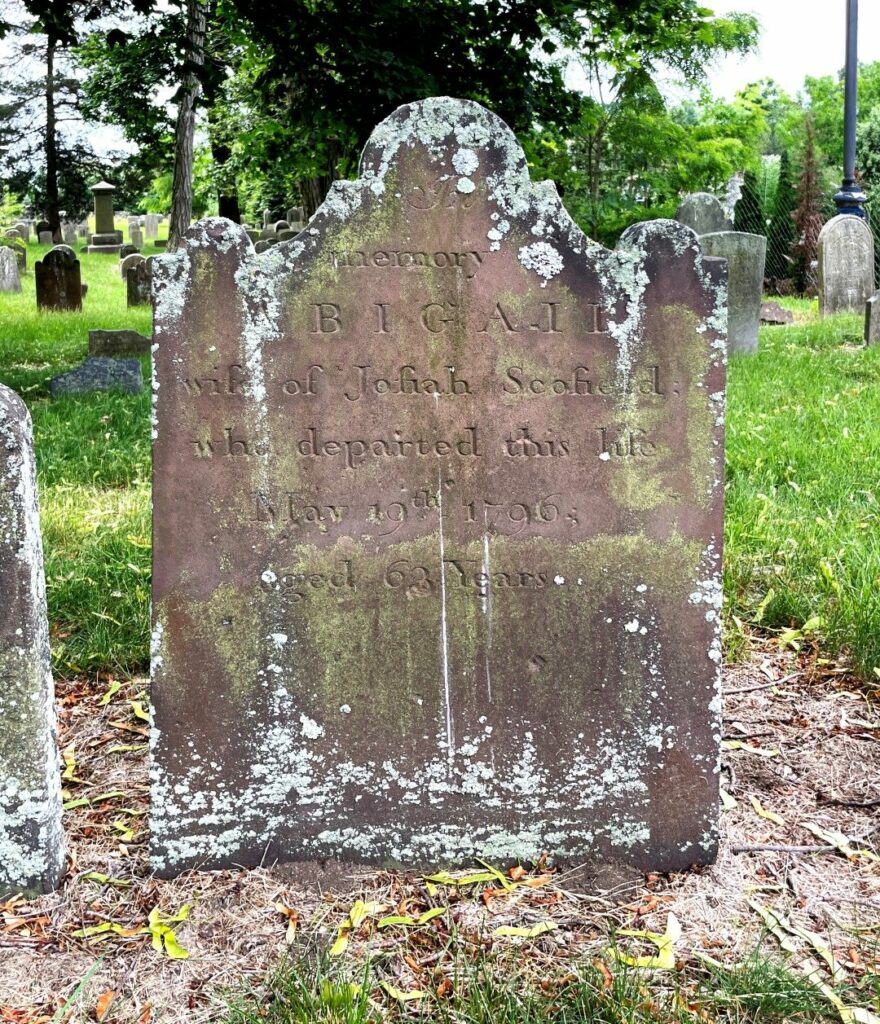
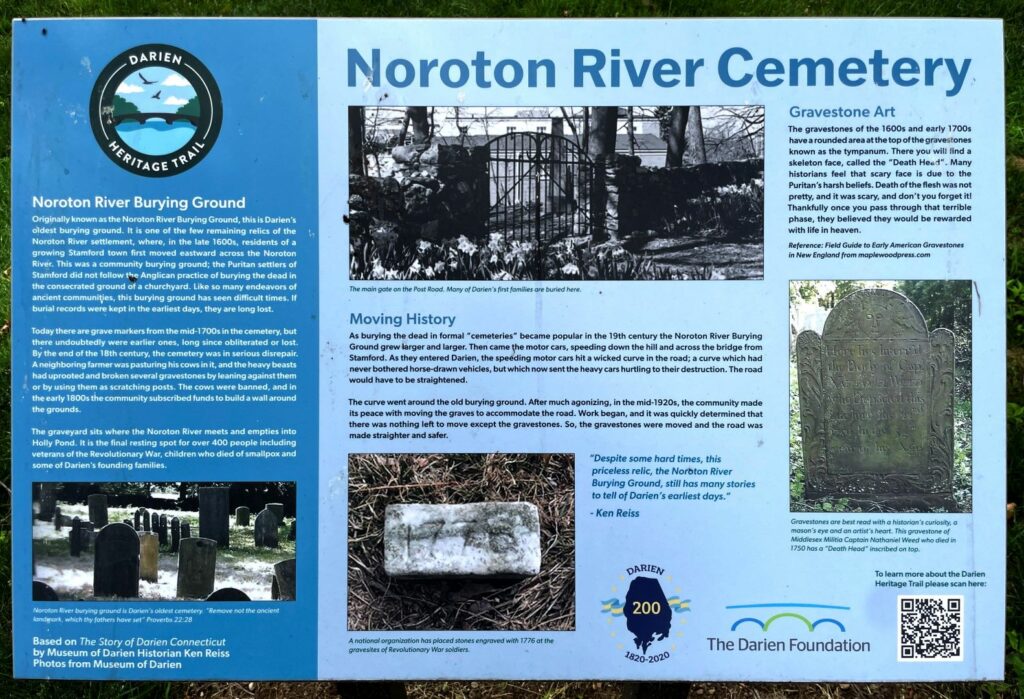
No historical tour would be complete without a visit to the town’s historic cemetery.
Established in the early 18th century, the graveyard holds the remains of countless individuals who played significant roles in shaping the local community and the wider region. Originally known as the “Old Cemetery,” it served as the final resting place for early settlers, Revolutionary War veterans, prominent local figures, and generations of families who called Darien their home. Over time, the graveyard evolved and expanded, reflecting the changing customs and traditions surrounding burial practices. Today, the Noroton Graveyard stands as a poignant reminder of Darien’s past, offering visitors a glimpse into the lives and legacies of those who came before them.
Paying Tribute to George Washington (6)
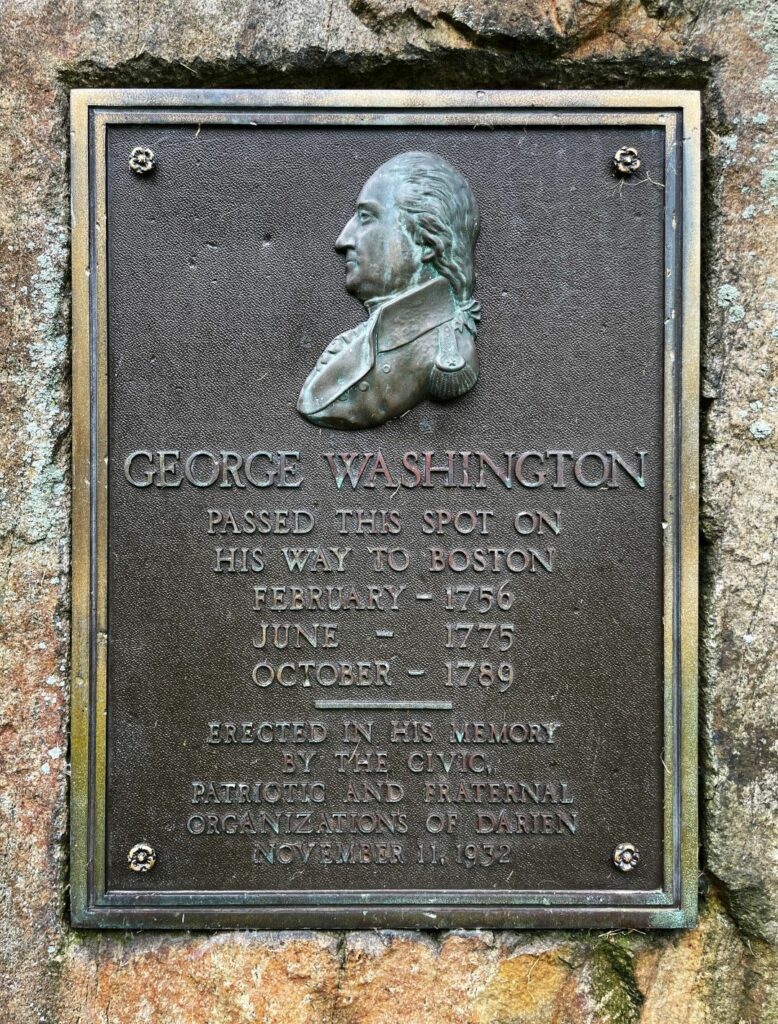

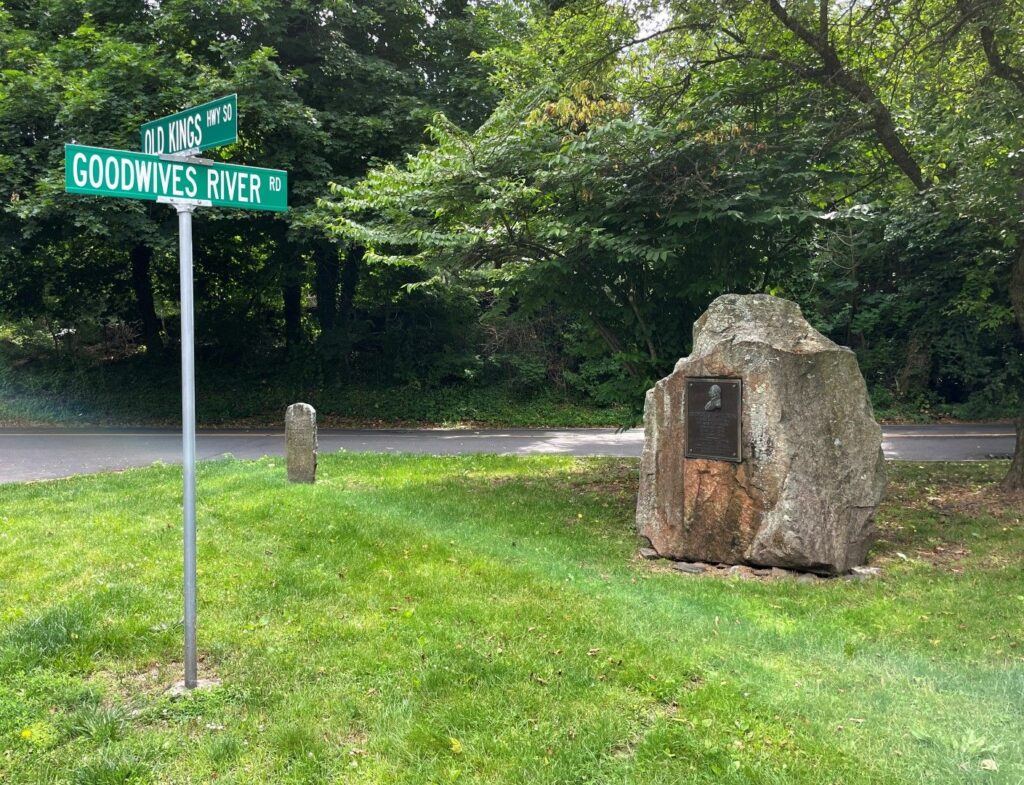
Our tour concluded with a visit to the George Washington monument, honoring the three times the nation’s first president graced Darien with his presence. The statue stood tall and proud, a reminder of the town’s historical significance and its enduring connection to the broader narrative of the United States. It was a fitting end to our journey through Darien’s captivating history. The plaque stands next to a marker as part of Benjamin Franklin’s postal network, telling us that Fairfield is only 17 miles away (you may have to squint to see the 17.)
So,
My adventure with the Museum of Darien’s tour was a delightful blend of architectural marvels, intriguing stories, and a deep appreciation for the town’s historical legacy. From the enchanting Bates-Scofield house to the quirky Pond Weed house, and from the serene First Congregational Church to the storied Mather Homestead, each stop offered a unique glimpse into the soul of Darien. Exploring the town’s historic cemetery and paying homage to George Washington added a touch of reverence to the journey.
If you find yourself in Connecticut with a love for history and architecture, I highly recommend embarking on a similar tour. Darien’s hidden gems and captivating stories await, ready to whisk you away on a journey through time.
